Cours de l’or en direct, le vrai prix de l’or aujourd’hui
Le cours de l’or ne fluctue jamais par hasard, il traduit les tensions, les peurs et les espoirs des marchés mondiaux. L’or est donc bien plus qu’un simple métal précieux, c’est un thermomètre de la confiance mondiale. Son prix évolue en temps réel selon les dynamiques des marchés. Ce chiffre, en apparence technique, parle en réalité de choses très concrètes comme l’inflation, les tensions géopolitiques, les politiques monétaires ou encore la stabilité des grandes économies. Comprendre le cours de l’or, c’est donc comprendre l’état du monde et mieux anticiper ses choix d’investissement. Le cours de l’or est le baromètre mondial de référence, quand il monte, c’est souvent le signe que les milieux économiques sont inquiets et à l’inverse, une baisse traduit un retour de l’optimisme sur les marchés, ou une hausse des taux d’intérêt qui rend d’autres placements plus attractifs que l’or.
Cours de l’or en euro au kg
Cours lingots d’or et pièces d’or
| Product | Date | Courses | Change from previous day's price |
Bonus | ||
|---|---|---|---|---|---|---|
| Gold Bar 1 Kg | 25/07/2025 | 90 000,00 € | - | 0.10% | Buy Sell | |
| Gold ingot 500 Gr | 25/07/2025 | 48 690,00 € | = | 0.11% | Buy Sell | |
| Gold ingot 250 Gr | 25/07/2025 | 24 400,00 € | - | 0.11% | Buy Sell | |
| Gold Ingot 100 Gr | 25/07/2025 | 9 700,00 € | - | 0.10% | Buy Sell | |
| Lingotin Gold 50 Gr | 25/07/2025 | 4 885,00 € | = | 0.09% | Buy Sell | |
| Gold Ingot Once 31.1 Gr | 25/07/2025 | 3 120,00 € | = | 0.11% | Buy Sell | |
| Lingotin oR ® 20g | 25/07/2025 | 2 010,00 € | = | N/A | Buy Sell | |
| Lingotin oR ® 10g | 25/07/2025 | 1 015,00 € | = | N/A | Buy Sell | |
| Lingotin oR ® 5g | 25/07/2025 | 508,00 € | = | N/A | Buy Sell | |
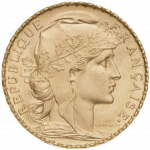 |
Gold coin 20 Francs Napoléon / Louis d'Or | 25/07/2025 | 555,80 € | + | 6.48% | Buy Sell |
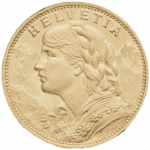 |
Gold coin 20 Swiss Francs | 25/07/2025 | 526,00 € | - | 0.77% | Buy Sell |
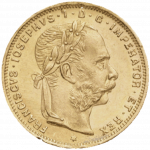 |
Union Latine Or | 25/07/2025 | 560,00 € | + | 7.28% | Buy Sell |
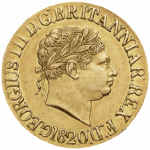 |
Sovereign Gold Coin | 25/07/2025 | 691,10 € | + | 4.90% | Buy Sell |
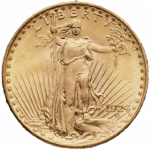 |
20 Dollars | 25/07/2025 | 2 802,25 € | = | N/A | Buy Sell |
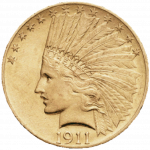 |
10 Dollars | N/A | N/A | ? | N/A | Buy Sell |
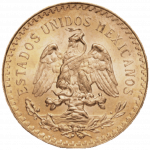 |
Mexican 50 Pesos Gold Coin | 25/07/2025 | 3 498,50 € | = | 0.09% | Buy Sell |
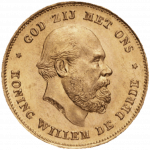 |
10 Dutch Guilders | 25/07/2025 | 568,90 € | + | N/A | Buy Sell |
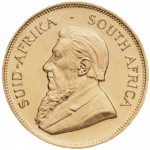 |
Krugerrand Gold Coin | 25/07/2025 | 2 998,75 € | = | 0.07% | Buy Sell |
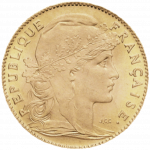 |
Gold coin 10 Francs Napoléon | N/A | N/A | ? | N/A | Buy Sell |
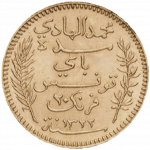 |
20 Franc Gold Coin Tunisia | 25/07/2025 | 546,00 € | = | 4.60% | Buy Sell |
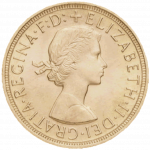 |
Sovereign Elizabeth II | 25/07/2025 | 704,70 € | = | N/A | Buy Sell |
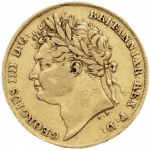 |
Tomi Souverain | 25/07/2025 | 359,90 € | = | N/A | Buy Sell |
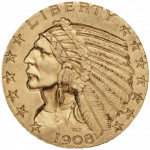 |
5 US Dollars Gold Coin | 25/07/2025 | 758,90 € | = | 12.13% | Buy Sell |
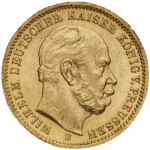 |
20 Reich Mark Or | 25/07/2025 | 673,90 € | + | 4.00% | Buy Sell |
Analyse du cours de l’or
Le cours de l’or agit comme un baromètre des peurs économiques mondiales. En période d’inflation élevée, de turbulences géopolitiques ou de politiques monétaires incertaines, les investisseurs se tournent massivement vers l’or comme valeur refuge. Cette dynamique reste d’actualité puisque début 2025, l’once d’or a dépassé 3 000$, reflet des inquiétudes liées à la hausse des prix et aux tensions commerciales autour des tarifs douaniers mis en place par Donald Trump. L’or ne rapportant pas d’intérêt fixe, son attrait augmente quand la confiance dans les actifs traditionnels faiblit et que les taux réels sont négatifs. En d’autres termes, surveiller le cours de l’or permet de mesurer l’inquiétude des marchés face à l’inflation, aux conflits ou aux politiques monétaires restrictives.
Sur les 20 dernières années, le cours de l’or a reflété chaque grand choc économique. Après avoir tourné autour de 280$ l’once en 2001, soit 400 $ environ aujourd’hui si on tient compte de l’inflation. L’or est ensuite monté en flèche avec la crise financière de 2008–2009 puisqu’il est passé d’environ 730$ l’once en octobre 2008 à 1300$ en octobre 2010, alors que la panique bancaire poussait les investisseurs vers les métaux précieux. Le pic suivant est atteint en 2011 avec l’once d’or à 1779$, soit plus de 2200$ si on corrige l’inflation, sur fond de crise de la dette souveraine et de craintes d’inflation. Par la suite, l’or a corrigé son cours et en 2015, il évoluait autour de 1060$ l’once.
Avec la pandémie de Covid-19, le métal jaune repart à la hausse en 2020, année où le prix moyen de l’once d’or dépasse les 1890$. Plus récemment, les incertitudes liées aux relances massives, aux tensions géopolitiques dont la guerre en Ukraine depuis 2022 et aux politiques commerciales ont propulsé l’or vers de nouveaux sommets. Fin 2024, l’once flirtait avec 2625$ et début 2025 elle a même franchi pour la première fois la barre des 3 000$. Ces records du cours de l’or confirment qu’à chaque grande crise du XXIᵉ siècle, qu’elle soit financière, sanitaire ou géopolitique, l’or suscite systématiquement un afflux de demande.
Pourquoi le cours de l’or est exprimé en once et pas en kilo ?
Si le cours de l’or est exprimé en once, ce n’est pas un hasard ni une simple convention, c’est un legs de l’histoire des échanges commerciaux européens. L’unité en question, l’once troy, est issue des pratiques médiévales des marchands de la ville de Troyes, en France, point nodal des foires de Champagne où se rencontraient les circuits commerciaux nordiques et méditerranéens. Cette once, plus lourde que l’once avoirdupois qui était utilisée pour les produits du quotidien, a été conservée spécifiquement pour les métaux précieux, car elle s’est imposée dans les premiers standards de pesée utilisés par les grandes institutions commerciales, notamment la Monnaie royale britannique. Au fil du temps, les marchés internationaux de l’or ont adopté cette unité pour garantir la cohérence et la comparabilité des prix. Aujourd’hui encore, à la Bourse de Londres ou sur le COMEX à New York, les cotations de l’or continuent de suivre cette tradition.
Le prix de l’or est traditionnellement coté en dollars américains sur les marchés internationaux. Historiquement, il existe une corrélation inverse entre le cours de l’or et la valeur du dollar, lorsque le dollar se déprécie face aux autres grandes devises, le prix de l’or a tendance à monter. Cette hausse s’explique par le fait qu’un dollar plus faible diminue le coût de l’or pour les acheteurs étrangers, stimulant ainsi la demande mondiale.
Pour les investisseurs européens, cette dynamique a un effet particulier. Quand le cours de l’or monte sur les marchés mondiaux, une baisse simultanée du dollar peut partiellement compenser cette hausse en rendant l’or moins cher une fois converti en euros. Autrement dit, un euro fort face au dollar peut atténuer le coût d’achat de l’or, même en période de tension haussière.
Sur le long terme cependant, la progression du cours est semblable dans les deux devises. Entre 1999 et 2020, le prix de l’or s’est multiplié par environ 6 en dollars et par 6,5 en euros. Autrement dit, le métal sert de couverture contre la dépréciation aussi bien du dollar que de l’euro. Même si en pratique, lorsque l’euro s’apprécie, le cours de l’or exprimé en euros peut baisser.
Comment fonctionne la cotation de l’or ?
Le prix spot représente le prix auquel tu peux théoriquement acheter ou vendre une once d’or physique, à un instant T, sur un marché de gré à gré. Contrairement aux contrats à terme, qui fixent un prix pour demain, le spot, lui, concerne aujourd’hui.
Mais ce prix n’est pas fixé dans une salle unique, il est synthétisé à partir des milliers de transactions électroniques qui se déroulent en permanence sur les grandes places de négoce de Londres à New York en passant par Zurich, Shanghai. Il est influencé par l’activité du COMEX, par le fixing du LBMA, par la parité du dollar, les taux d’intérêt réels, les achats de banques centrales, et même par les flux d’ETF adossés à l’or.
Le LBMA organise le fixing de l’or deux fois par jour à 10h30 et 15h heure de Londres. Le prix est déterminé par un processus d’enchères, basé sur l’offre et la demande réelle de lingots physiques. Chaque jour, à heures fixes, cinq grandes banques internationales, actuellement HSBC, JPMorgan, ScotiaMocatta, UBS et ICBC Standard, se réunissent virtuellement. Ces banques sont appelées direct participants, car elles interviennent directement dans le mécanisme de fixation. Un prix initial est proposé par l’administrateur du fixing, l’ICE Benchmark Administration et les participants soumettent leurs volumes d’achat et de vente à ce prix. Si l’offre dépasse la demande, le prix est ajusté à la baisse et si la demande dépasse l’offre, il est ajusté à la hausse. Ce processus continue jusqu’à ce que les deux volumes convergent dans une fourchette acceptable. Le système est automatisé mais supervisé, chaque itération se fait rapidement, à travers une interface numérique sécurisée. Une fois que l’équilibre est atteint, le prix devient l’official LBMA Gold Price AM ou PM qui sert de prix de référence pour les contrats physiques à travers le monde. Il est utilisé dans les contrats d’approvisionnement, les règlements interbancaires, les bilans comptables des banques centrales ou les opérations de fonds d’investissement.
Le COMEX ou Commodity Exchange est un marché à terme basé à New York, où l’or est principalement négocié sous forme de contrats à terme. Un contrat à terme est un engagement d’acheter ou de vendre une quantité standardisée d’or, généralement 100 onces troy, à une date future, pour un prix fixé à l’avance. Contrairement au marché physique, la plupart des participants ne prennent pas livraison du métal, ils spéculent simplement sur les fluctuations du prix de l’or. Le prix est déterminé en temps réel par la confrontation continue des ordres d’achat et de vente sur la plateforme électronique du COMEX. Les cotations y sont très liquides, influencées par les taux d’intérêt, le dollar, les politiques monétaires, et les anticipations macroéconomiques.
Le Shanghai Gold Exchange est la principale bourse de l’or en Chine, fondée en 2002 avec l’appui direct de la Banque populaire de Chine. C’est un marché centralisé, où sont négociés des contrats d’or physique. Sur le SGE, l’or est échangé en yuan et livré physiquement et la grande majorité des transactions impliquent la remise effective du métal. Cela renforce la transparence du marché et évite la spéculation excessive. Le SGE publie également un prix de référence quotidien, le Shanghai Gold Benchmark Price, destiné à rivaliser avec les fixings de Londres. Ce marché est strictement régulé par les autorités chinoises et réservé aux entités agréées, bien que des investisseurs étrangers aient été autorisés à y accéder progressivement à partir de 2014 via le Shanghai Free Trade Zone.
Qu’est ce qui influence le cours de l’or ?
L’inflation est l’un des déterminants majeurs du prix de l’or. En période de forte inflation, le pouvoir d’achat des monnaies fiduciaires baisse, ce qui incite les investisseurs à se réfugier dans l’or pour préserver leur richesse. Ainsi, le cours de l’or a généralement tendance à grimper quand les prix augmentent. Ce mécanisme est d’autant plus marqué que les taux d’intérêt réels, taux nominaux moins inflation, sont négatifs. En effet, l’or ne rapporte aucun coupon et quand les taux nominaux sont inférieurs au taux d’inflation, donc réels négatifs, conserver de l’or coûte moins cher en termes de renonciation au rendement et l’or devient plus attractif. À l’inverse, si les banques centrales relèvent rapidement leurs taux au-delà de l’inflation, les taux réels positifs augmentent l’intérêt de détenir d’autres actifs productifs.
Prenons un exemple concret, supposons que tu places ton argent sur un livret à 2% d’intérêt annuel. Si l’inflation est à 5%, ton taux d’intérêt réel est de -3 % (2-5=-3). Cela signifie que ton épargne perd du pouvoir d’achat chaque année. Dans ce contexte, détenir de l’or devient une alternative logique, certes il ne rapporte pas d’intérêts, mais il ne t’appauvrit pas davantage. Mieux encore, sa valeur peut monter, car d’autres investisseurs, confrontés au même dilemme, cherchent eux aussi à s’abriter dans l’or, ce qui fait grimper son prix.
Plus largement, la confiance des investisseurs est cruciale. L’or brille dans les moments d’incertitude, quand les perspectives économiques se dégradent ou que les politiques monétaires suscitent des doutes, la demande de métal jaune se renforce. Des analyses récentes montrent ainsi que la flambée du cours de l’or à +40 % depuis fin 2023 est largement expliquée par un pic sans précédent de l’incertitude économique mondiale. En somme, l’inflation élevée, la baisse des taux réels et la montée des craintes (guerres commerciales, sanctions, rebond du protectionnisme, etc) sont les grands moteurs qui soutiennent le cours de l’or.
L’impact des banques centrales sur le cours de l’or
Les banques centrales du monde entier accumulent de l’or de manière inédite. Selon le World Gold Council, elles ont ajouté 1 045 tonnes nettes à leurs réserves en 2024, prolongeant à 15 ans consécutifs leur statut d’acheteurs nets de métal jaune. Ce niveau d’achats à plus de 1 000 t/an depuis 2022, dépasse largement la moyenne des années 2010 à 2020, où le rythme était plutôt à 473 tonnes par an. Des pays comme la Pologne avec 90 tonnes en 2024 et la Turquie avec 75 tonnes figurent en tête de peloton des plus gros acheteurs d’or.
La Chine est également un acteur majeur via sa banque centrale qui a ajouté 155 tonnes à ses réserves d’or en 2023, pour porter ses réserves officielles à environ 2 165 tonnes, soit environ 4% de ses réserves de change. Cette politique s’inscrit dans un mouvement global car l’Inde, la Russie et les autres marchés émergents ont également accru leurs achats d’or ces dernières années. Ces pays visent plusieurs objectifs stratégiques, l’or leur permet de diversifier leurs réserves hors du dollar, d’améliorer la sécurité monétaire nationale et de se prémunir contre les sanctions financières. La Banque populaire de Chine l’exprime ainsi : augmenter l’or en réserve aide à « diversifier les réserves de change, réduire la dépendance à l’égard d’une monnaie unique comme le dollar, et renforcer la capacité de résistance aux risques financiers».
En résumé, l’appétit historique des banques centrales pour l’or, notamment en Europe de l’Est et en Asie soutient mécaniquement le cours. La plupart des grandes banques centrales disent qu’elles prévoient encore d’augmenter la part de l’or dans leurs réserves.
Faut-il acheter de l’or quand il monte ou quand il baisse ?
Ce dilemme hante de nombreux particuliers. Faut-il acheter la hausse et parier sur la tendance ou acheter la baisse et profiter d’une décote temporaire ? La réponse dépend avant tout de votre horizon et de votre profil. Sur le court terme, l’or peut fortement fluctuer et les investisseurs spéculatifs peuvent décider d’entrer à la moindre panique ou de sortir en mode profit-taking, mais le timing parfait est risqué. En revanche, pour un investisseur long terme ou patrimonial, l’or s’apparente à une assurance qui peut être détenue indépendamment des oscillations immédiates du prix. Dans cette optique, la stratégie classique est de lisser ses achats.
On peut aussi distinguer les formes d’or d’investissement. L’or papier (certificats, contrats à terme et ETF) offre une grande liquidité et s’adresse aux investisseurs davantage pressés de profiter de chaque mouvement de cours. En revanche, l’or physique (lingots et pièces) demande plus de patience, c’est un investissement pour les profils prudents et orientés préservation du patrimoine. Chaque investisseur doit donc adapter sa stratégie à son objectif, spéculer sur de courts mouvements ou conserver le métal jaune comme bouclier pour les décennies futures.
Les experts recommandent de croiser plusieurs dimensions avant d’acheter. D’abord, suivre le contexte macroéconomique, l’inflation prévue, les décisions de la Fed et de la BCE, les politiques budgétaires, la situation géopolitique, etc. Par exemple, il est sage de rester attentif aux signaux de renforcement des pressions inflationnistes ou des éventuelles nouvelles hausses de taux, qui pourraient justifier un achat d’or. L’annonce de mesures protectionnistes est également un catalyseur classique, car elle peut alimenter des tensions commerciales, perturber les chaînes d’approvisionnement mondiales, accentuer les hausses de prix, et renforcer l’attrait de l’or comme valeur refuge face à l’incertitude économique et géopolitique.
Ensuite, il peut être utile de surveiller le marché des devises et l’appétit des banques centrales via les statistiques du WGC. La corrélation historique avec le dollar et les achats des banques centrales fournissent des indices supplémentaires sur l’orientation probable du cours. Enfin, la stratégie du coût moyen est souvent privilégiée, cela consiste à acheter régulièrement des montants fixes d’or, chaque mois par exemple, quelle que soit la tendance du prix. Cette méthode, largement utilisée en épargne financière, permet de lisser son point d’entrée, on acquiert ainsi plus d’or quand le cours est bas et moins quand il est haut, réduisant ainsi le risque de mauvais timing. Sur le long terme, cette approche réduit l’impact de la volatilité et s’appuie sur la tendance de fond de l’or à monter en période inflationniste.
FAQ : les questions fréquentes sur le cours de l’or
Comment faire pour acheter de l’or ?
Pour acquérir de l’or physique, il est recommandé de consulter un expert dans le domaine. Seuls ces spécialistes peuvent fournir des informations transparentes sur les prix et la fiscalité de l’or, vous conseiller et vous accompagner tout au long du processus d’achat.
Opter pour une agence spécialisée dans l’achat et la vente d’or est la méthode la plus sûre pour garantir la qualité de vos investissements. Ainsi, vous recevrez un certificat d’authenticité attestant de la qualité des pièces et lingots d’or achetés. Le professionnel choisi doit être en mesure de vous fournir rapidement et sans intermédiaires, car leur intervention pourrait entraîner des frais de commission supplémentaires sur votre facture.
Comment vendre son or au meilleur prix ?
Vendre de l’or sous forme de pièces, bijoux ou lingots en toute sécurité et avec paiement immédiat nécessite de faire appel à un comptoir de rachat d’or professionnel, sérieux et indépendant. Abacor vous offre une expertise gratuite et sans engagement pour la vente de votre or.
Vos pièces ou lingots sont évalués en fonction du cours de l’or en temps réel et nos experts numismates tiennent compte de la rareté des pièces pour déterminer le meilleur prix de rachat. En choisissant Abacor, vous bénéficiez d’un paiement immédiat et d’un cadre sécurisé et en tant que souscripteur de la taxe, Abacor vous accompagne pour identifier la fiscalité la plus avantageuse lors de la revente de vos lingots d’or ou pièces d’or, tels que les Louis d’or, Souverains, 50 Pesos ou 20 dollars.
Combien coûte le gramme d’or aujourd’hui ?
La valeur d’un lingot d’or dépend de son poids et du cours actuel de l’or. Le lingot d’or le plus courant pèse 1 kilo, soit environ 32,15 onces troy. Pour connaître la valeur d’un lingot d’or de 1 kilogramme, il faut donc multiplier le cours de l’or par once troy par 32,15.
Par exemple, si le cours de l’or est de 1000 dollars américains par once troy, la valeur d’un lingot d’or de 1 kilogramme serait de 32 150,75 dollars. Il est important de noter que le prix de l’or fluctue constamment en fonction des conditions du marché et d’autres facteurs économiques.

